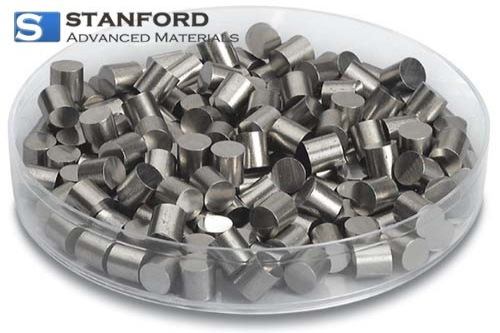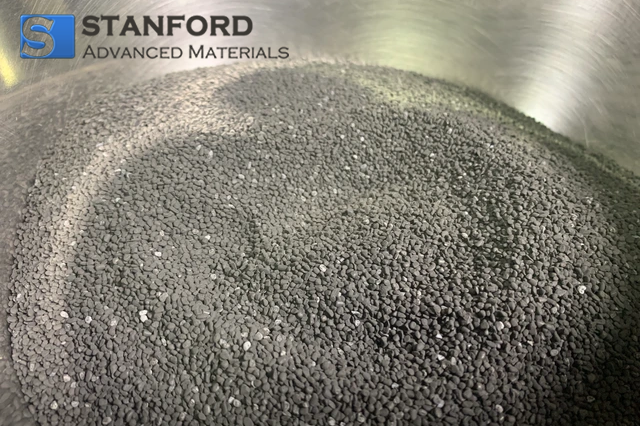Iridium: Element Properties And Uses
Description
Iridium is a dense, corrosion-resistant metal noted for its silvery-white appearance and extreme stability. Iridium is considered one of the Earth's rarest and most valuable metals, serving key applications in aerospace components, spark plugs, electrical contacts, and several other high-strength alloys.

Iridium the Element:
Iridium belongs to the PGM group of metals and is one of the rarest elements within the Earth's crust. The British chemist Smithson Tennant discovered this element in the early 19th century, and since then the discovery of iridium from platinum ores has been of significant interest to both scientists and industrialists. Its atomic number is 77, while its atomic weight stands at 192.217, making it a valuable but scarce commodity. The large melting and boiling points of iridium, at 2 446°C and 4 130°C, respectively, make this element particularly applicable to high-temperature and high-stress conditions, hence its continuing role in various technological advancements.
Chemical Properties:
Iridium possesses several chemical properties that are somewhat uncommon among most metals. Notably, it is highly resistant to corrosion, oxidation, and wear. In even the most reactive environments, iridium retains its structural integrity owing to its inert nature. This resistance to degradation arises from its ability to support two stable oxidation states, +3 and +4, in many of its compounds. Because of this stability, iridium enjoys widespread application in catalytic processes, particularly those requiring the metal to operate under acidic or high-temperature conditions.
The chemical inertness of iridium is another aspect that underscores its utility in applications involving aggressive chemicals, such as sulphuric or nitric acid. This, in turn, is a prerequisite for the manufacture of corrosion-resistant parts used in the chemical and pharmaceutical industries. Its outstanding resistance to high-temperature oxidation extends its role in energy-related applications.
Physical Properties:
Physical properties render iridium one of the most robust elements on the periodic table. Its density is approximately 22.56 g/cm³, which is nearly double that of lead, and this high density contributes to its remarkable strength. Iridium has a high melting point of 2 446°C; its ability to maintain strength at extreme temperatures enables numerous important industrial applications where materials require performance under high thermal stress.
In addition to its remarkably high melting point, iridium is extremely hard and resistant to wear. This makes it very useful in applications where mechanical parts endure frequent abrasion. Whether used in spark plugs for high-performance engines or in aerospace applications, the durability of iridium ensures reliable performance under difficult conditions.
|
Property |
Value |
|
Atomic Number |
77 |
|
Atomic Weight |
192.217 |
|
Density |
22.56 g/cm³ |
|
Melting Point |
2 446°C |
|
Boiling Point |
4 130°C |
For more information, please check Stanford Advanced Materials (SAM).
Common Uses:
Iridium possesses exceptional physical and chemical properties, making it indispensable in various high-performance applications.
1. Spark Plugs: Iridium is used to manufacture spark plugs for aircraft engines, high-speed automotive engines, and high-performance applications due to its excellent electrical conductivity and resistance to thermal degradation, enabling it to function well in engines under extreme conditions.
2. Aerospace: Iridium can function in extremely high temperatures and is therefore found in nozzles, electrodes, and other critical components within the aerospace industry. These include parts in spacecraft that operate in space and engines in aircraft that run at very high temperatures.
3. High-Strength Alloys: Iridium is alloyed with other metals to produce high-strength alloys used in applications where mechanical parts are subjected to high stress, such as turbine blades, medical devices, and other critical components. Its excellent corrosion resistance further enhances the longevity and reliability of these alloys.
4. Scientific Instruments: Iridium is employed in the manufacture of scientific instruments and equipment that must withstand high temperatures and corrosive environments. For instance, this includes thermocouples, vacuum tubes, and other high-tech instruments associated with research in physics, chemistry, and materials science.
5. Electrical Contacts and Coatings: Iridium's strength and electrical conductivity make it an ideal material for electrical contacts and coatings. These are utilised in various electronic devices ranging from nuclear reactors to high-powered electrical circuits.
6. Catalysts: Iridium is used as a catalyst in several chemical processes, particularly in hydrogenation reactions. Its inertness and stability under high-pressure and high-temperature conditions render it an efficient catalyst in the production of fine chemicals, pharmaceuticals, and petrochemical products.
Related reading: 5 Common Uses of Iridium

Preparation Methods:
Iridium is extracted primarily as a byproduct of platinum mining; consequently, the supply is limited. In this process, PGMs such as platinum, palladium, and rhodium are mined. Iridium is separated through several complex chemical procedures, including solvent extraction, chemical precipitation, and high-temperature refining techniques. Due to its rarity and the complexity of its extraction, iridium is generally more expensive to produce compared to many other metals.
Extraction requires special equipment and conditions of high pressure and temperature to achieve the necessary purity. After refinement, iridium is utilised in the production of various high-value industrial products, including certain alloys and components for use in electronics, aerospace, and other advanced technologies.

Frequently Asked Questions:
1. What makes iridium so valuable in industrial applications?
The significant resistance of iridium to corrosion and oxidation, in addition to its very high melting point and density, establishes it as an ideal material for industries that involve extreme conditions, such as aerospace, automotive, and electronic applications.
2. How is iridium extracted?
Iridium is obtained as a byproduct from mining for platinum. Refining platinum-group metal ores at high temperatures using specific chemical processes allows for the separation of iridium.
3. What are some common applications for iridium?
Iridium is utilised in spark plugs, high-strength alloys, scientific instruments, electrical contacts, coatings, and as a catalyst in various chemical processes.
4. Why is iridium considered one of the rarest elements?
Iridium is considered a rare element due to its low concentration within the Earth's crust, the difficulty associated with its extraction, and the resource-intensive processes required for its refinement.
5. How do the physical properties of iridium contribute to industrial uses of the element?
Iridium's high density, resistance to wear, high melting point, and strength at elevated temperatures establish its significance in high-performance applications that require durability, precision, and reliability.

 Bars
Bars
 Beads & Spheres
Beads & Spheres
 Bolts & Nuts
Bolts & Nuts
 Crucibles
Crucibles
 Discs
Discs
 Fibers & Fabrics
Fibers & Fabrics
 Films
Films
 Flake
Flake
 Foams
Foams
 Foil
Foil
 Granules
Granules
 Honeycombs
Honeycombs
 Ink
Ink
 Laminate
Laminate
 Lumps
Lumps
 Meshes
Meshes
 Metallised Film
Metallised Film
 Plate
Plate
 Powders
Powders
 Rod
Rod
 Sheets
Sheets
 Single Crystals
Single Crystals
 Sputtering Target
Sputtering Target
 Tubes
Tubes
 Washer
Washer
 Wires
Wires
 Converters & Calculators
Converters & Calculators
 Write for Us
Write for Us




 Chin Trento
Chin Trento



